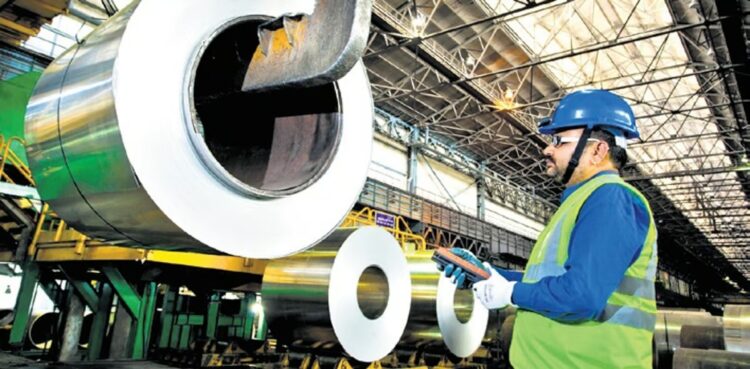India’s riddle around private investment
The private sector is not very excited about capacity growth in the nation, despite the government’s emphasis on capital expenditures. The meagre rise in private investment may be attributed to a number of causes, chief among them being uncertainty in the global economy.

Although private investment has increased from the low points in 2016 and 2017, it has not yet returned to the levels seen in 2011–12. Government data indicates that private investment accounted for 27% of GDP at both current and constant prices. At current prices, it fell to 21.3% of GDP in 2016 and 2017. It was 22.7% of GDP in 2016 and 23.2% of GDP in 2017 at constant prices. After that, it progressively increased to 25.7% of GDP at constant rates and 23.8% of GDP at current rates in 2023.
We see that investments as a percentage of GDP at constant prices are much greater than investments at current prices, and that the gap has widened significantly in recent years. What is causing the inconsistency is the fluctuation in the GDP deflator. Anil K. Sood, professor and co-founder of the Institute for Advanced Studies in Complex Choices (IASCC), said, “I prefer to use nominal numbers for assessing the progress we are making in building capacity for growth, given that the households and corporations base their decisions on these numbers.”
Private investments include both household and corporate investments.
Sood claims that private company investment has recovered more than household investment, but their investments are in real estate—not in manufacturing, equipment, or intellectual property. IT and equipment purchases are seen to carry a higher level of risk. The real estate sector’s expansion being driven by office and commercial building also explains the lower investment in equipment and intellectual property.
NITI Aayog member Arvind Virmani disagrees with those who believe that private investment is stagnating. He claims that the modest increase in the cost of equipment and machinery is the main reason why private investment seems to be slowing down.
“Investment goods and capital prices are increasing more slowly than the GDP.” According to Virmani, “the price of the capital goods is going down in real terms divided by the general price level when the ratio of the current prices of investment to GDP, such as machinery and equipment and structure, is declining much less than with that at constant prices.”
indications of pickup
The slower rise in private investment might be caused by a number of factors, including rising interest rates, global geopolitical challenges, and more uncertainty, according to economist and EGROW Foundation founder Charan Singh. But he also notes that the digital revolution and the achievements of programs like Jandhan Adhaar (JAM trinity) have led to a good trend in loan off-take in the Mudra and MSME categories.
“NBFCs’ proportion of total credit is also rising. The notion that the amount and quality of investment need to be more closely scrutinized is reinforced by the latest statistics, which shows high monthly private consumption spending and a strong growth rate, according to Singh.
Certain industries, such as steel, hotels, and tourism, are exhibiting indications of increased investment. JSW Steel intends to increase its capacity from its current 25.70 million metric tons to 50 million metric tons by FY31, while SAIL plans to increase its capacity from its current 20.632 million metric tons to 35.6 million tons by FY31.
Over the last 18 to 24 months, there has been a noticeable increase in demand in the hotel and tourist business, which has resulted in a surge in supply announcements and the reactivation of postponed projects, according to ICRA Ltd.
The forecast for the supply of luxury hotels in the future years has improved significantly as a result of new agreements and the introduction of international brands into the Indian market. On the other hand, supply is expected to expand more slowly than demand.
“Religious, corporate, and tier-II leisure locations witness large supply announcements. In addition, compared to pre-Covid levels, the cost of building a room has increased by 20–25% on top of cost inflation, according to ICRA.
According to Arvind Virmani, a member of the Economic Advisory Council of the Prime Minister (EAC-PM), private investment has started to increase and is expected to continue doing so over the next five years. The economy has benefited from the government’s increase in capital spending, which has increased by about 30% annually. The capital expenditure multiplier is 2.5. We have expanded by more than 7% because of this, Virnami adds, adding that capital spending attracts investment.
high capital costs
Virmani and Singh agreed that the world’s uncertainties are the reason for the high interest rates. Despite being exposed to the public, the industrial sector is still connected to the outside world, so businesses must be aware of what their competitors are doing. My prediction is that beginning in April of next year, both of these elements will become less severe. If my research is accurate, there will be a decrease in global interest rates over the course of the next year together with a decrease in global uncertainty, which will lead to an increase in corporate investment, Virmani said.
According to Lekha Chakraborty, a professor at the National Institute of Public Finance and Policy, India’s large public deficit is correlated with significant capital expenditure needed to draw in foreign direct investment. India’s Insolvency and Bankruptcy Code was implemented with the aim of restructuring its struggling sectors. Furthermore, during the dual balance sheet crisis—the rising levels of corporate debt and the bank’s balance sheet—bank recapitalization was carried out to ensure the private business sector had an adequate capital base. The dangers and uncertainties associated with the macroeconomy have made the private sector reticent despite all these improvements. According to her, the Center is on track to concentrate on capital expenditures in order to draw in private business investment; but, the effects will take time to materialize.
declining foreign direct investment
India has seen a decline in foreign direct investment (FDI) between 2021 and 2022. From $59 billion in 2021–2022 to $46 billion in 2022–2023 it decreased. FDI has decreased by 13% to $32 billion in the first nine months of the current fiscal year. In reference to foreign investment, Virmani said that the developed world’s portion of investment has increased while developing nations’ part has decreased. India’s proportion in the emerging market has not decreased, but rather risen.
The previous 10 years have seen a fair amount of success for FDI in India. The center is working on free trade agreements (FTAs) and the product linked incentive scheme (PLI). These are the two pillars of its supply chain-related foreign direct investment (FDI) strategy, which it is pursuing because, as Virmani said, “the multiplier effect is better as we will get more skilling and employment.”







